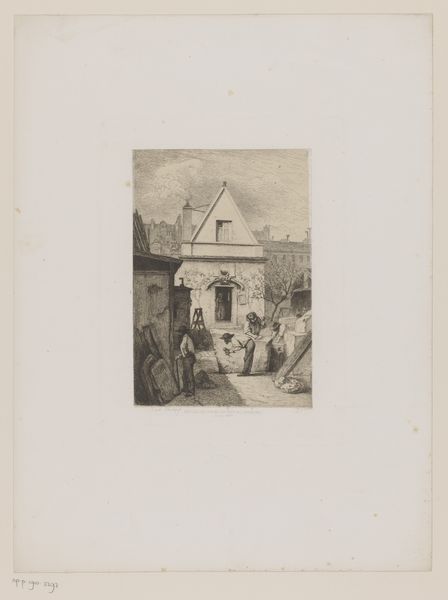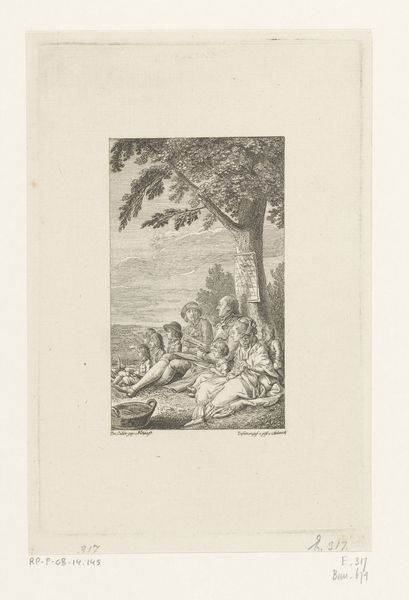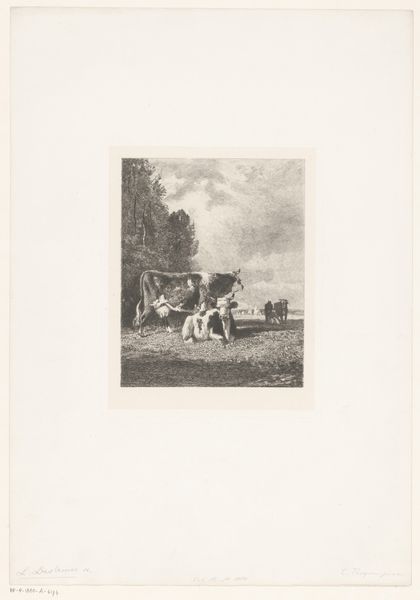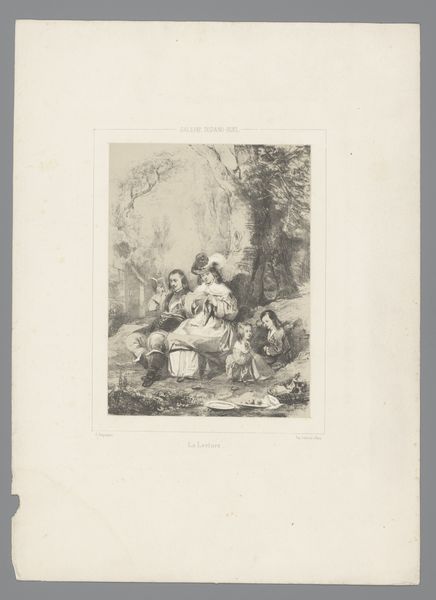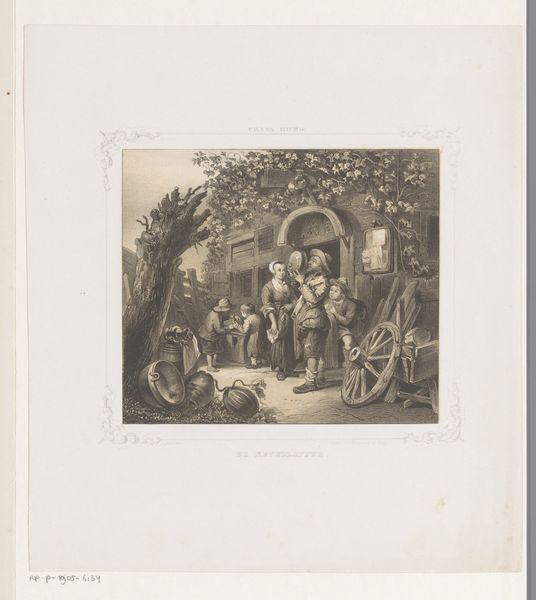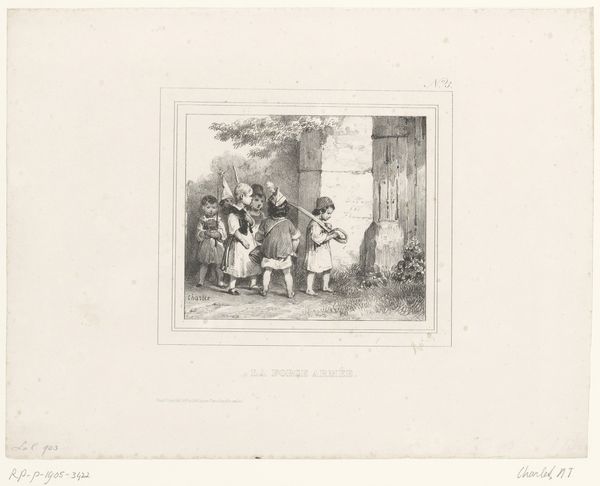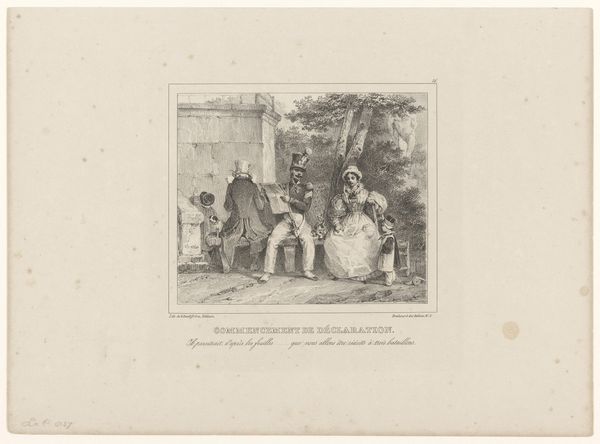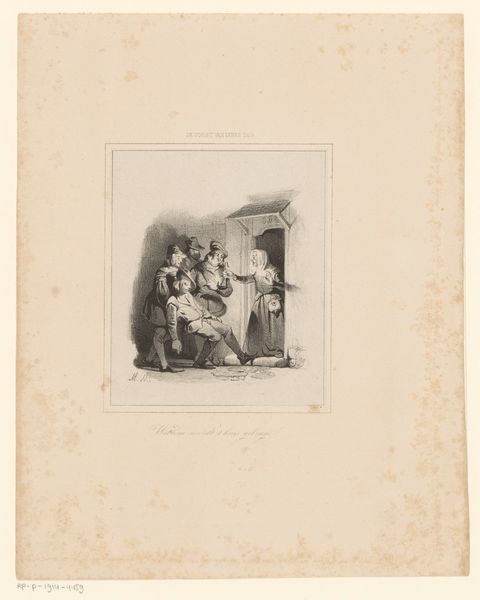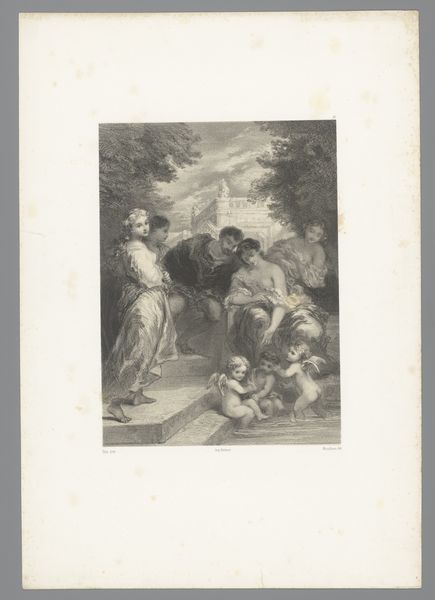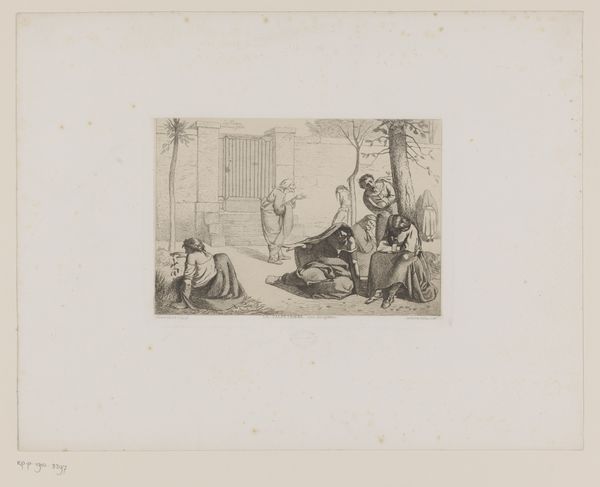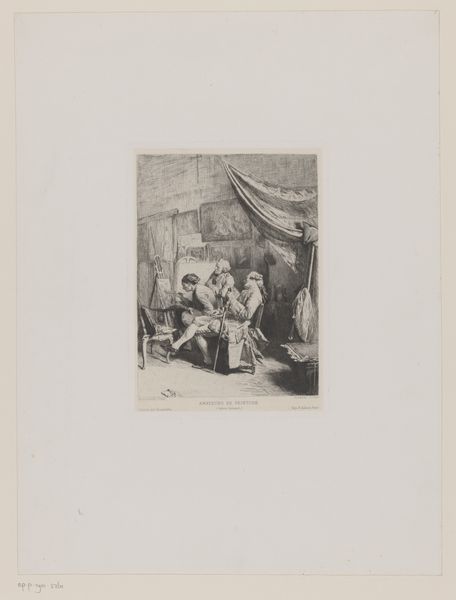
print, etching
#
tree
# print
#
etching
#
landscape
#
genre-painting
#
realism
Dimensions: height 166 mm, width 118 mm
Copyright: Rijks Museum: Open Domain
Editor: Here we have "Pluimvee bij een kippenhok," or "Poultry by a Chicken Coop," an etching by Eugène Michel Joseph Abot, created sometime between 1846 and 1876. The level of detail in the coop itself is quite impressive. How do you approach a work like this? Curator: Well, let's start with the material reality. It's an etching, right? Think about the labour involved. The artist is not just representing chickens; they are engaged in a whole *process* of production. What does the choice of etching as a medium tell us about accessibility, about its intended audience and how art was disseminated at that time? Editor: That's a perspective I hadn't considered. I was mainly thinking about the subject matter – the chickens and the coop itself as a symbol of rural life. Curator: Exactly! Now think about the chicken coop. It is a *constructed* space. We’re seeing here not just chickens, but the intersection of human labour and the natural world, all mediated through material objects. How might the economic function of these chickens impacted how they were depicted, the role that these objects have to fulfill? Editor: So you are seeing a commentary on the role of agriculture and maybe the social context of rural life? Is the emphasis on realism here also part of a larger material concern with accurately representing the world? Curator: Precisely! Realism as a movement isn’t just about aesthetics; it's about a commitment to portraying the lives and conditions of everyday people and things, produced within a specific socio-economic reality. These chickens aren’t just aesthetic objects, they represent capital, labor, and a certain class identity. Editor: I see your point. By focusing on the medium and the real-world context, we move beyond just looking at chickens! Curator: Indeed! Understanding art’s materials and the processes by which it is made can illuminate the social and economic forces shaping both its creation and reception.
Comments
No comments
Be the first to comment and join the conversation on the ultimate creative platform.
